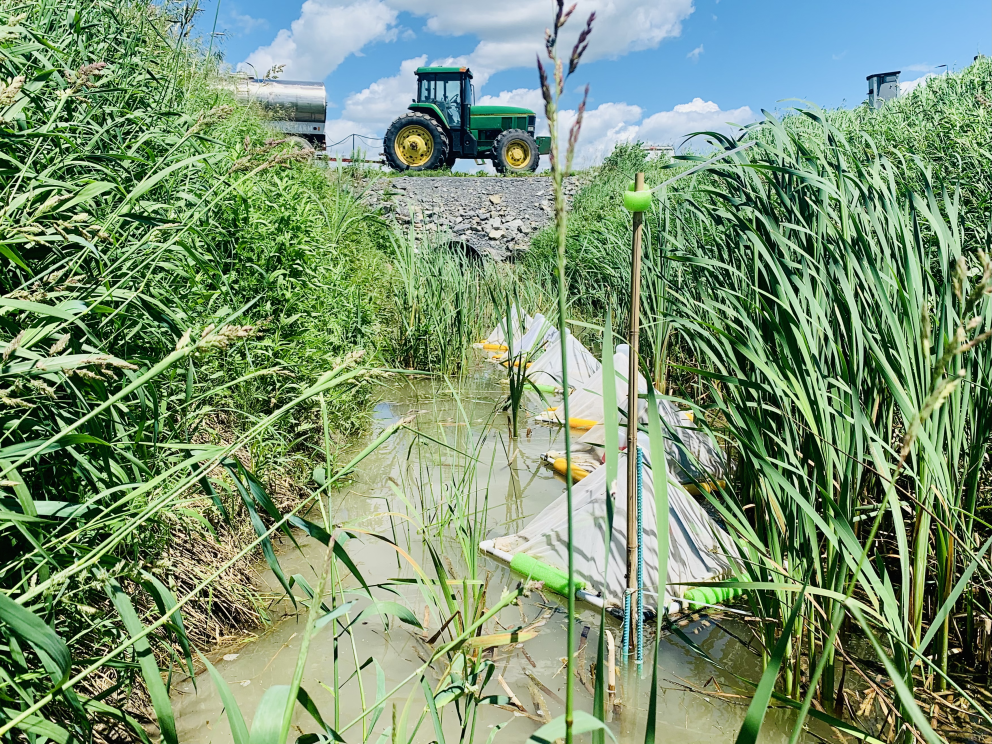The secret world of ditches

The ditches are steep and full of stinging nettle so I trod carefully, bottles and notebooks stuffed into the top of my waders so my hands—gloved in thick neoprene—are free to flail out in case I slip and slide straight into the water. It poured last night so the water has risen from my knees to chest, running off the farmers' fields and into the channels, which are dredged regularly so plants and sediment don't clog up and hinder their design. But these waterways have their own agenda, one I'm risking the dryness of my socks to study. They provide precious habitat for birds, bats, frogs and fish. The insects I trap as they emerge from water to air, searching for mates, will fill the landscape with energy-rich nutrients, particularly important for the nearby tree swallows who are happy to have made their homes in our orange nest boxes as they swerve out to catch fluttering mayflies to bring home to their hungry nestlings. As agriculture expands and intensifies, these secret little worlds, despite being human-made, are becoming more and more of a lifeblood for riparian wildlife, while the natural habitat we often fail to conserve is rapidly lost.